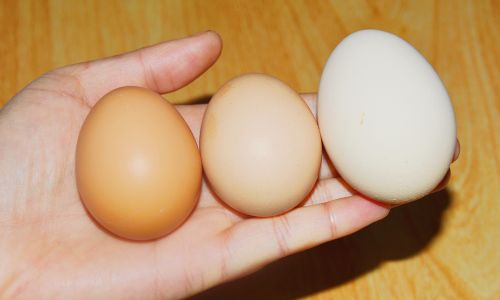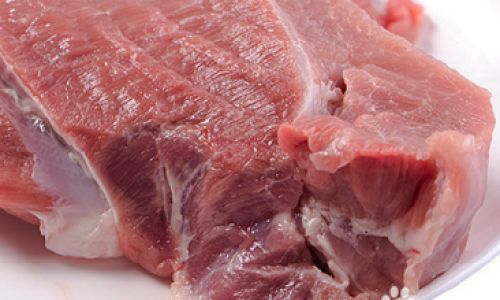Table of content
Introduction
Eggs are a staple in many diets worldwide, offering a rich source of protein, essential vitamins, and minerals. From breakfast scrambles to baking recipes, eggs play a vital role in culinary art. However, not all eggs are created equal. Some are fresher, healthier, and of better quality than others. Knowing how to discern the quality of eggs can significantly impact your cooking experience and, more importantly, your health. This comprehensive guide will delve into various methods and techniques to help you identify and select the best eggs available.
Understanding Egg Quality
Before diving into the specifics of how to discern egg quality, it’s essential to understand what constitutes a good egg. Several factors contribute to the overall quality of an egg, including freshness, nutritional content, shell integrity, and storage conditions. Fresh eggs typically have a firmer yolk, thicker whites, and a more robust shell. They also tend to have a better taste and texture when cooked.
Freshness
Freshness is one of the most critical aspects of egg quality. As eggs age, their internal structures undergo changes that affect their appearance, texture, and flavor. Fresh eggs have a more vibrant yolk color, firmer yolk consistency, and thicker albumen (egg white). Over time, the yolk flattens, the albumen thins, and the air sac at the larger end of the egg enlarges.
Nutritional Content
The nutritional content of eggs can vary depending on the diet and health of the hen that laid them. Free-range and organic eggs, for instance, are often perceived as higher quality due to the hens’ access to a more natural diet and environment. These eggs may contain more omega-3 fatty acids, vitamins, and antioxidants compared to conventionally farmed eggs.

Shell Integrity
The shell of an egg provides protection against bacteria and other contaminants. Strong, smooth shells indicate healthy hens and proper calcium intake. Cracks, thin shells, or rough textures can be signs of poor hen health or nutritional deficiencies.
Storage Conditions
Proper storage is crucial for maintaining egg quality. Eggs should be kept in a cool, dry place, ideally at a temperature of around 40°F (4°C) or below. Warm temperatures can accelerate the aging process, causing the eggs to spoil faster.
Visual Inspection
One of the simplest and most effective ways to discern egg quality is through visual inspection. Here are some key indicators to look for:
Shell Appearance
- Color: While shell color can vary depending on the breed of hen, it should be uniform and consistent. Dark brown, light brown, white, or blue shells are all common, but they should not have spots, cracks, or discoloration.
- Texture: The shell should feel smooth and strong to the touch. Rough or brittle shells can indicate nutrient deficiencies or stress in the hen.
Shape and Size
- Shape: Ideally, eggs should be oval or slightly pointed at one end. Odd shapes, such as flattened or irregularly rounded eggs, can be indicative of stress or health issues in the hen.
- Size: Egg size can vary, but most commercial eggs are classified as small, medium, large, extra-large, or jumbo. While size doesn’t necessarily indicate quality, consistency in size can be a sign of good hen health and management practices.
Air Sac
- Location and Size: The air sac, a small pocket of air at the larger end of the egg, should be small and difficult to see. A large, easily visible air sac is a sign of an older egg.
Candling
Candling is a technique used to inspect the interior of eggs using a bright light source. This method is commonly employed by farmers and hatcheries to check for fertility, embryo development, and cracks. Here’s how you can use candling to discern egg quality:

- Light Source: Use a bright flashlight or a specialized candling light.
- Dark Room: Conduct the candling in a dark room to minimize glare and shadows.
- Inspection: Hold the egg up to the light source with the larger end pointing towards you. Look for the following:
- Yolk Position: In a fresh egg, the yolk should be round and centered. As the egg ages, the yolk flattens and moves towards the larger end.
- Albumen Condition: Fresh eggs have thick, cloudy albumen surrounding the yolk. Older eggs have thinner, clearer albumen.
- Blood Spots: Occasionally, you may see tiny blood spots in the yolk. These are harmless but can be a sign of stress in the hen.
- Cracks and Thinning Shells: Cracks or thin spots in the shell will be more visible under the light.
Float Test
The float test is a quick and easy way to check the freshness of eggs at home. As eggs age, the air sac enlarges, causing the egg to become more buoyant in water. Here’s how to perform the float test:
- Fill a Bowl: Fill a bowl or pan with cold water.
- Place the Egg: Carefully place the egg in the water.
- Observe: If the egg sinks to the bottom and lays flat on its side, it’s likely fresh. If it stands on one end or floats partially, it’s older. If it floats completely, it’s very old and should be discarded.
Sniff Test
While not as definitive as other methods, the sniff test can provide additional insight into egg freshness. Fresh eggs have a very faint, almost unnoticeable odor. As they age, they may develop a sulfuric or “off” smell. If an egg has a strong, unpleasant odor, it’s best to discard it.
Taste Test
Tasting an egg, especially raw, is not recommended due to potential health risks from salmonella and other bacteria. However, if you’re confident in the source and freshness of the egg, a small taste of a cooked egg can give you an indication of its quality. Fresh eggs have a richer, creamier flavor with a firmer yolk texture. Older eggs tend to be drier, with a flatter yolk and a less appealing taste.
Checking the Expiration Date
In many countries, eggs are sold with a “best before” or “use by” date printed on the carton. While these dates are not always indicative of the egg’s actual freshness, they can serve as a general guideline. Eggs can often be used safely beyond their expiration date if they have been stored properly. However, it’s always best to err on the side of caution and use eggs before their expiration date if possible.

Understanding Egg Labels
When shopping for eggs, you’ll encounter various labels and certifications that can be confusing. Here’s a brief guide to help you navigate the terminology:
- Free-Range: Hens have access to the outdoors but may not necessarily spend much time outside.
- Cage-Free: Hens are not confined to cages but may still be housed in enclosed barns.
- Organic: Hens are fed a diet of organic feed and have access to the outdoors. Organic eggs may contain more omega-3 fatty acids and antioxidants.
- Pasture-Raised: Hens are allowed to roam freely on pasture, eating natural foods like insects and plants.
- Certified Humane: Hens are raised under conditions that meet specific animal welfare standards.
Conclusion
Discerning the quality of eggs involves a combination of visual inspection, candling, float tests, sniff tests, and understanding egg labels. By paying attention to these factors, you can ensure that you’re selecting fresh, high-quality eggs that will enhance your cooking experience and contribute to your overall health. Remember, proper storage and handling are also crucial in maintaining egg quality. With this knowledge, you can confidently navigate the egg aisle and enjoy the delicious, nutritious benefits of high-quality eggs.






0 comments